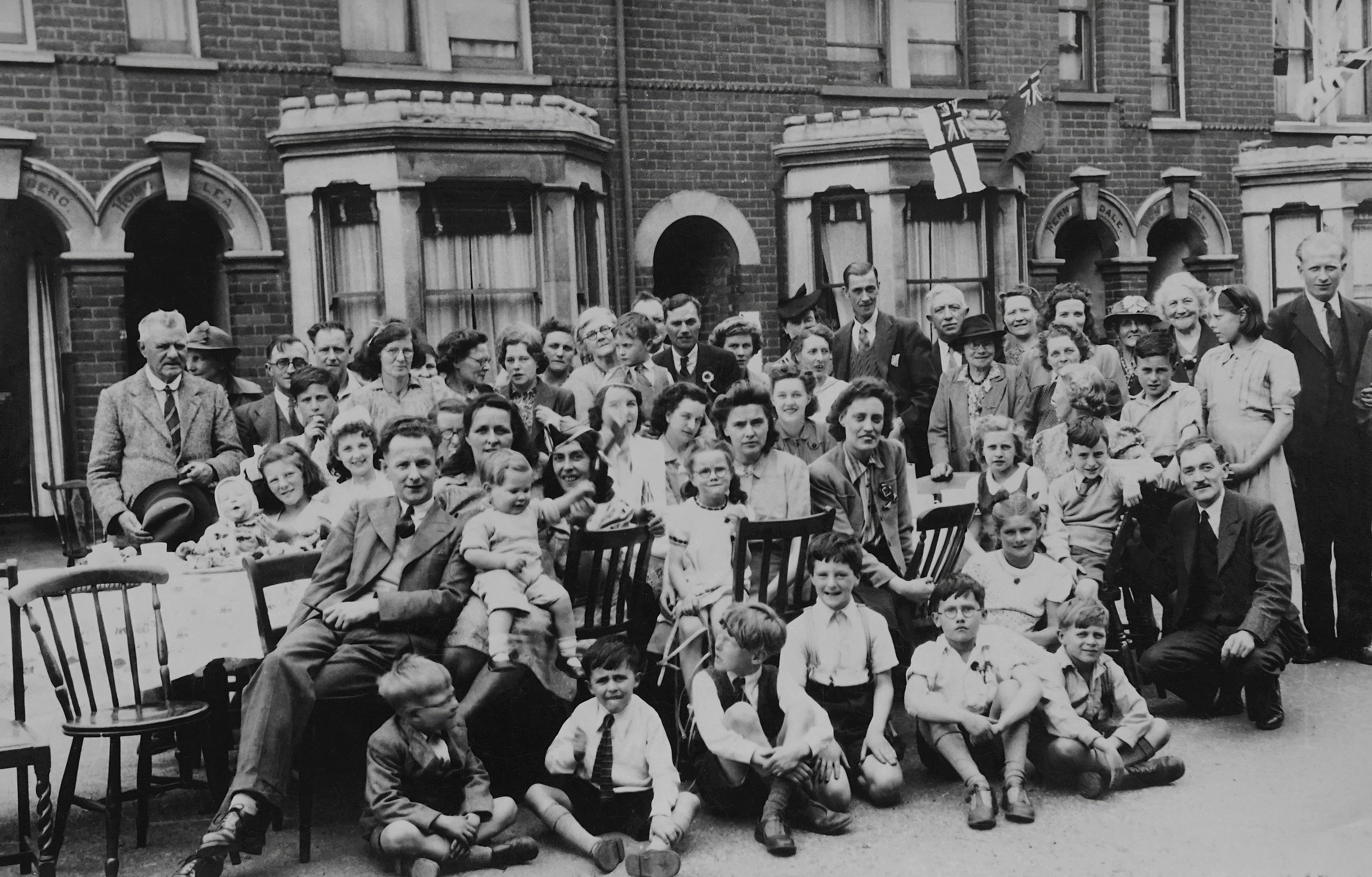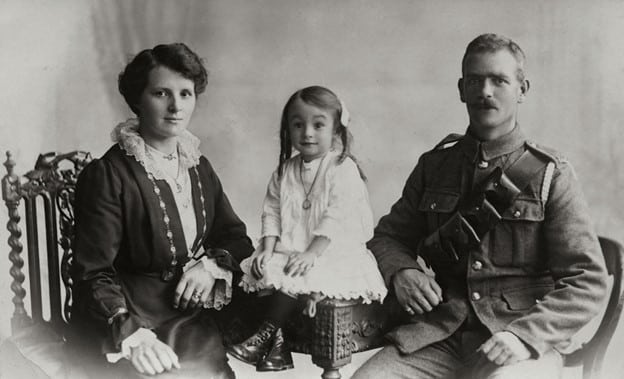
Working With Family Members on Your Family History Book
WORKING WITH FAMILY MEMBERS ON YOUR FAMILY HISTORY BOOK
When it comes to writing a family history book, there are few projects that can be as rewarding, and as complicated, as collaborating with your family members.
Writing a family history book is completely different to, let’s say, writing business books, corporate histories, or perhaps a nonfiction book. Not everyone knows how to write a family history book, but there are, thankfully, loads of online resources available to help you with your project.
While working on a family history book with loved ones can be an incredible bonding experience, it can also be fraught with tension, disagreement, and frustration.
To ensure successful collaboration, it’s essential to approach the project with the right mindset and to establish clear guidelines from the outset.
This article will explore the benefits of writing family history books, memoirs, and autobiographies, followed by some of the best practices when working with family members.
We will look specifically at handling sensitive information, engaging your shy and reticent family members, employing some tips on interviewing, and then utilizing your interview materials.
Why Write a Family History Book or Memoir?

Every family has a history that is worth preserving. However, the sad reality is, history that is not recorded is soon forgotten. Writing a family history book is important for several reasons:
- Preservation of family legacy. A family history book can help preserve your family’s legacy for future generations. It’s an opportunity to record important events, stories, and personal experiences that might otherwise be lost or forgotten.
- Understanding of family heritage. By researching and documenting your family history, you may gain a deeper understanding of your family’s heritage, culture, and traditions. This knowledge can be passed down to future generations, helping them to connect with their roots and understand their place in the world.
- Sense of connection. Writing a family history book can help strengthen family ties and foster a sense of connection between generations. It can provide an opportunity for family members to come together, share stories, and learn more about each other.
- Historical significance. Your family history may have historical significance, providing a window into a particular time and place. By recording and preserving this information, you can contribute to a larger historical narrative and provide valuable insights into the past.
- Personal growth. Writing a family history book can be a meaningful and fulfilling project that can help you grow as a person. It requires research, organization, and creativity, all of which can be valuable skills to develop. It can also provide a sense of accomplishment and pride in your family’s history and legacy.
How to Handle Sensitive Information
When writing a family history book, you will be working with a very large amount of information in various formats, some of which may be of a sensitive nature.
It's essential to handle sensitive information with care, respect, and confidentiality.
Here are some specific steps you can take when handling sensitive information with the care it deserves:

- Identify sensitive information. Start by identifying the types of information that could be considered sensitive, such as personal medical histories, mental health issues, criminal records, financial information, or other sensitive family matters. Make a list of all the sensitive information you have gathered and evaluate each item to determine whether it’s necessary to include it in your family history book.
- Obtain consent. Before including sensitive information about living family members, seek their consent. Explain what information you plan to include and how it will be shared. If they’re uncomfortable with anything, respect their wishes. Make sure you have a signed consent form for each person, and keep these forms securely stored.
- Anonymize data. Consider anonymizing data where possible to protect privacy. For example, use initials instead of full names or change identifying details such as dates or locations. Be mindful that anonymizing data can sometimes make it more challenging for readers to understand the context, so use your judgment carefully.
- Limit access. Consider limiting access to your family history book to close family members or other trusted individuals. If you plan to share it with a wider audience, make sure that sensitive information is clearly marked, and consider including a disclaimer to explain that the information is sensitive. You may also want to consider password-protecting electronic copies or keeping hard copies locked away.
- Use discretion. When writing about sensitive topics such as family conflicts, illnesses, or criminal histories, use discretion and sensitivity. Avoid sensationalizing or exaggerating the details and focus on presenting the information in a factual and objective manner. If you’re unsure how to approach a particular topic, consult with family members or seek the advice of a professional genealogist.
- Respect boundaries. Be mindful of family members’ boundaries and feelings. If someone expresses discomfort with certain information being included, consider leaving it out or finding a way to present it in a more respectful and sensitive manner. Remember that the goal of a family history book is to celebrate and honor family history, not to cause harm or discomfort.
Keeping the above in mind can ensure that your family history book is respectful, informative, and meaningful for all family members while also protecting sensitive information.
Engaging Family Members

One of the most challenging issues you may need to overcome is convincing some family members to take part and contribute to your project.
You may find that not everyone in your family will share your enthusiasm for the project, especially your more introverted family members.
The following steps can help you to convince your family members to participate in the project:
- Explain the importance. Start by explaining the importance of preserving your family’s history. Let your family members know that the book will not only be a great way to document your family’s legacy, but will also serve as a wonderful keepsake for generations to come.
- Get their input. Ask your family members what they think should be included in the book. This will not only help you get their buy-in, but will also make them feel involved and valued in the process.
- Assign tasks. Divide the tasks into smaller, more manageable ones and assign each family member with specific responsibilities. For example, you could ask one person to research and gather photos, while another could be responsible for writing a particular section.
- Make it fun. Find ways to make the process enjoyable for everyone involved. You could organize a family reunion or a get-together where you can all work on the book together.
- Set deadlines. Set realistic deadlines and make sure everyone knows what is expected of them. This will help keep everyone accountable and ensure that the book is completed in a timely manner.
- Show examples. If possible, show examples of family history books that other families have created. Seeing what other families have done can inspire your own family members to get involved.
- Be patient. Be patient and understanding if some family members are not initially interested or have other commitments. Keep them in the loop and continue to encourage them to contribute as much or as little as they can.
The key is to make your family members feel valued and involved in the process. By doing this, you will increase the likelihood of them being willing to help you write a family history book.
Family History Interviews
When interviewing family members for a family history book, it's important to use interviewing techniques that will encourage them to share their memories, experiences, and stories.
Here are some tried and tested techniques that work well:

- Use active listening. Active listening involves focusing on what the person is saying and showing them that you are interested and engaged in the conversation. This means giving them your full attention, making eye contact, and using nonverbal cues to show that you are listening. Responding with follow-up questions and comments will also help keep the conversation going.
- Use open-ended questions. When asking questions, try to ask open-ended questions that allow the person to tell their story in their own words. For example, instead of asking, “What did you do for a living?” try asking, “Can you tell me about your career and how you got started in it?”
- Avoid using leading questions. Avoid asking questions that suggest a particular answer or that could be interpreted as judgmental or critical. For example, instead of asking, “Did you ever regret moving to a new town?” try asking, “What was it like moving to a new town and starting over?”
- Use prompts. Using prompts, such as photographs, documents, or objects, can help stimulate memories and prompt the person to share more details. For example, showing an old family photo and asking the person to tell you about the people in the photo can lead to a rich conversation about family history.
- Be sensitive and mindful. Be sensitive to the person’s emotions and feelings during the interview. Some family members may have difficult or painful memories, so approaching these topics with empathy and respect is important. Let them know that it’s okay to take breaks or stop the conversation if they need to.
- Follow up. After the interview, follow up with the person to thank them for their time and to clarify any details or information that you may have missed. This can also be an opportunity to ask follow-up questions or to share your progress on the family history book.
These techniques can help you foster a comfortable, engaging, and safe interview environment that encourages family members to share their stories and contribute to the family history project.
If you plan to record all your family history interviews at home, you may find Modern Heirloom Books best practice tips very helpful.
How to Use Your Interview Materials

Conducting interviews and gathering information and then using that information in the book writing process are two completely different tasks
This stage is where you may start to wonder “How long does it take to write a book?” because you may find converting all the interview materials into a coherent narrative very challenging and time consuming.
The following steps can help you get organized and stay on track:
- Transcribe the interviews. Transcribe the interviews you conduct with your family members. This involves typing out the entire conversation in a document, including every spoken word.
- Organize the content. Organize the content of the interview into themes or categories. This could include topics such as family traditions, childhood memories, or significant life events. Use headings and subheadings to structure the content and make it easier for readers to navigate.
- Edit for clarity and coherence. Once you have organized the content, edit the transcripts for clarity and coherence. This involves removing any repetitive or unclear sections and rearranging the content to flow logically.
- Incorporate quotes. Use direct quotes from the interview transcripts to add depth and authenticity to the book. Use quotation marks to indicate when your family member is speaking and include their name and relationship to you.
- Add context and background information. Provide context and background information for the topics discussed in the interviews. This could include historical events or cultural traditions that are relevant to your family’s history.
- Blend with other sources. Blend the interview materials with other sources of information, such as photographs, documents, and historical records. This will help provide a more comprehensive picture of your family’s history.
- Review and revise. Finally, review and revise the content to ensure that it is accurate and engaging. Share the draft with other family members who contributed to the interviews and ask for their feedback.
In Conclusion
Writing a family history book or memoir can be a deeply rewarding project that helps preserve your family’s legacy, connect generations, and contribute to a larger historical narrative.
Collaboration with family members, however, can be challenging and requires a thoughtful approach to sensitive information, engaging introverted family members, and effective interviewing techniques.
To handle sensitive information with care, you must get consent, anonymize data where necessary, limit access, and use your own discretion. To engage introverted family members, you can explain the importance of the project, get their input, assign tasks, and schedule interviews at a time and place where they feel most comfortable.
Finally, successful collaboration requires clear guidelines from the outset and being mindful of your family members’ boundaries and feelings.
Related Content
- 0 Comment
Subscribe to Newsletter
- How Can SharePoint Be Used To Organize and Disseminate SOPs?
- Planning the Perfect Genealogy Research Trip: A Step-by-Step Guide
- From Silly to Awesome: How Words Change Meaning Over Time
- The Psychology of Font Choice: How Typography Impacts Content Engagement
- How to Distribute SOPs for Maximum Usability








